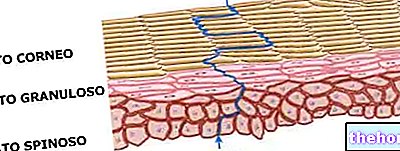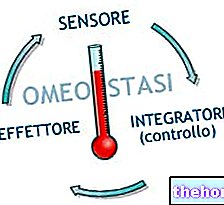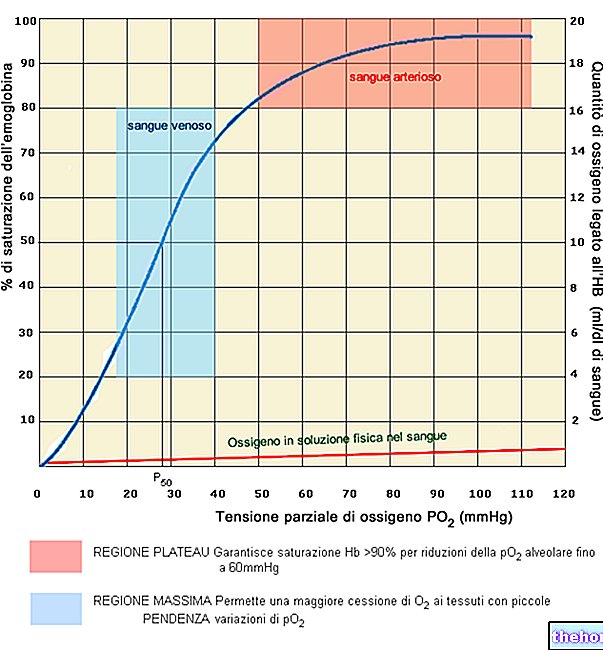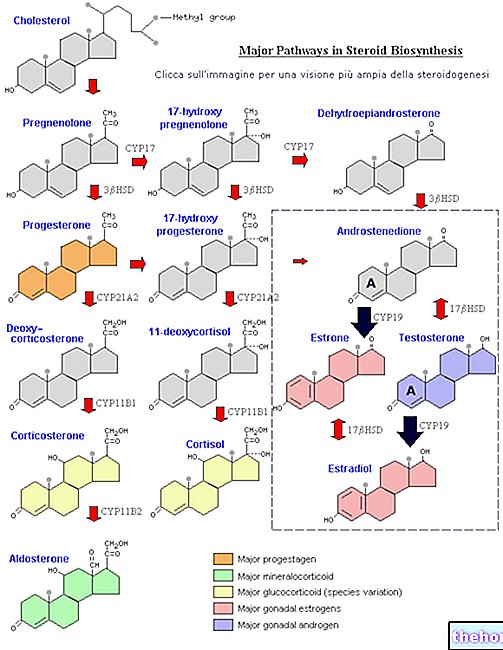What are
Liposomes are closed vesicular structures whose dimensions can vary from 20-25 nm up to 2.5 μm (i.e. 2500 nm). Their structure (very similar to that of cell membranes) is characterized by the presence of one or more double layers of amphiphilic lipids that delimit a hydrophilic core containing material in the aqueous phase. Furthermore, the aqueous phase is also present outside the liposomes.

The interest in this discovery was immediately high, especially in the medical-pharmaceutical field. Not surprisingly, since the 1970s liposomes have been used, in experimental form, as drug carriers. Gradually, researchers have learned to refine the characteristics of the liposomes, in such a way as to make them capable of exerting the desired therapeutic effect.
Research in this area has been and still is very intense, therefore it is not surprising that liposomes are currently used as effective drug delivery systems.
Structure
Structure and Properties of Liposomes
As mentioned, liposomes have a structure that is characterized by the presence of one or more double layers of amphiphilic lipids. In detail, these double layers are mostly made up of phospholipid molecules: those of the outermost layer are regularly placed side by side and expose their polar head (hydrophilic portion of the molecule) towards the aqueous environment that surrounds them; the apolar tail (hydrophobic portion of the molecule) is instead facing inwards, where it intertwines with that of the second lipid layer, which has a mirror organization to the previous one. In the inner phospholipid layer, in fact, the polar heads are turned towards the aqueous environment contained in the cavity of the liposome.
Thanks to this particular structure, the liposomes can remain immersed in an aqueous phase, simultaneously hosting an aqueous content in which active ingredients or other molecules can be dispersed.
At the same time - thanks to the phospholipid bilayer - the entry and exit of water molecules or polar molecules is prevented, effectively isolating the content of the liposome (which cannot be modified by the entry or exit of water or polar solutes).

Niosomes
The niosomes (Non Ionic Liposomes) are particular liposomes whose structure is different from the "classic" liposomes. In fact, in the niosomes the phospholipid layers are replaced by synthetic non-ionic amphiphilic lipids, usually added to cholesterol. Niosomes have dimensions of less than 200 nanometers, are very stable and have various peculiar characteristics which - among other things - make them very suitable for topical use.
Features
The characteristics of liposomes depend on the typical structure of which these vesicles are endowed. The outer layers, in fact, have a remarkable affinity for plasma membranes, whose composition is broadly similar (natural phospholipids such as phosphatidylcholine, phosphatidylethanolamine and cholesterol esters).
In this way, the water-soluble substances contained within the liposomal microspheres can be easily conveyed inside the cells.
At the same time, the liposome can also incorporate pharmacologically active lipophilic molecules into its outer phospholipid bilayer.
Furthermore, as mentioned, the characteristics of the liposomes can be improved in order to adapt the vesicles to the most varied needs. To do this, it is necessary to intervene by making structural changes of various kinds depending on the objective to be achieved: for example, the problem relating to the instability of phospholipids (high tendency to oxidation), can be solved by partial hydrogenation, addition of an antioxidant (alpha-tocopherol) or by resorting to lyophilization (proliposomes), which allows to preserve the stability of the vesicles for a very long time.
Furthermore, the lipid bilayer can be constructed in such a way as to increase the binding to certain cell types, for example through antibodies, lipids or carbohydrates. Similarly, the affinity of liposomes for a given tissue can be modified by varying its composition and electrical charge (adding stearylamine or phosphatidylserine to obtain positively charged vesicles; while with dicetyl phosphate, negative charges are obtained), which increases the concentration of the drug in the target organ.
Finally, to increase the "half-life of liposomes it is possible to modify their surface by conjugating polyethylene glycol (PEG) molecules to the lipid bilayer, producing the so-called" Stealth Liposomes ". An FDA-approved anticancer drug treatment uses its own PEG-coated liposomes. carrying doxorubicin. As stated above, this coating significantly increases the half-life of liposomes, which gradually concentrate in cancer cells permeating the capillaries of the tumor; these, in fact, being of recent formation, are more permeable than those of healthy tissues, and as such allow the liposomes to accumulate in the neoplastic tissue and release the toxic active ingredients for cancer cells here.
Uses
Uses and Applications of Liposomes
Thanks to their particular characteristics and structures, liposomes are used in various fields: from the medical and pharmaceutical one up to the purely cosmetic one. In fact, since liposomes have a high affinity for the stratum corneum, they are intensely used in this field to favor the cutaneous absorption of functional substances.
As regards the medical and pharmaceutical fields, on the other hand, liposomes find applications in both the therapeutic and diagnostic fields.
In particular, the ability of liposomes to isolate their contents from the external environment is particularly useful in the transport of substances prone to degradation (such as, for example, proteins and nucleic acids).
At the same time, liposomes can be exploited in order to reduce the toxicity of some drugs: this is the case, for example, of doxorubicin - an anticancer drug that is indicated in ovarian and prostate cancer - which is encapsulated in long-circulating liposomes. its pharmacokinetics have been considerably modified, as well as the degree of efficacy and toxicity.
Classification
Classification and Types of Liposomes
The classification of liposomes can be carried out on the basis of various criteria, such as: size, structure (number of lipid bilayers of which the liposome is composed) and the method of preparation adopted (the latter classification, however, will not be considered in the course of the article).
In the following, these classifications and the main types of liposomes will be briefly described.
Classification based on structural and dimensional criteria
Based on the structure and number of phospholipid bilayers each vesicle has, it is possible to divide liposomes into:
Unilamellar liposomes
Unilamellar liposomes consist of a single phospholipid bilayer that encloses a hydrophilic core.
Depending on their size, unilamellar liposomes can be further classified into:
- Small unilamellar vesicles or SUVs (Small Unilamellar Vesicles) whose diameter can vary from 20 nm to 100 nm;
- Large unilamellar vesicles or LUVs (Large Unilamellar Vesicles) whose diameter can vary from 100 nm up to 1 μm;
- Giant unilamellar vesicles or GUVs (Giants Unilamellar Vesicles) whose diameter is greater than 1 μm.
Multilamellar liposomes
Multilamellar liposomes or MLVs (MultiLamellar Vesicles) are more complex, because they are characterized by the concentric presence of various lipid layers (generally more than five), separated from each other by aqueous phases (onion skin structure). Due to this particular characteristic, multilamellar liposomes reach diameters between 500 and 10,000 nm. With this technique it is possible to encapsulate a higher number of both lipophilic and hydrophilic active ingredients.
The so-called oligolamellar liposomes or OLVs also belong to the group of multilamellar liposomes (OligoLamellar Vesicles), always consisting of a series of concentric phospholipid double layers, but of a lower number than the "proper" multilamellar liposomes.
Multivesicular liposomes
Multivesicular liposomes or MVVs (MultiVesicular Vesicles) are characterized by the presence of a phospholipid bilayer inside which other liposomes are enclosed which, however, are not concentric as in the case of multilamellar liposomes.
Other classifications
In addition to what has been seen so far, it is possible to adopt another classification system that divides liposomes into:
- PH-sensitive liposomes: these are vesicles that release their contents in slightly acidic environments. In fact, at pH 6.5 the lipids that constitute them protonate and favor the release of the drug. This feature is useful because very often at the level of the tumor masses there is a significant lowering of the pH, due to the necrotic tissue that is forming with the growth of the tumor.
- Thermosensitive liposomes: they release their contents at a critical temperature (generally around 38-39 ° C). To this end, after the administration of the liposomes, the area where the tumor mass is present is heated, for example by ultrasound.
- Immunoliposomes: they release their contents when they come into contact with a cell that has a specific antigen.
Advantages and disadvantages
Main Advantages and Disadvantages of Liposomes
The use of liposomes has a number of significant advantages, such as:
- The constituents of the external phospholipid layers are biocompatible, so they do not cause unwanted toxic or allergic effects;
- They are able to incorporate and convey both hydrophilic and lipophilic molecules in target tissues;
- The substances carried are protected by the action of enzymes (proteases, nucleases) or by denaturing environments (pH);
- They are able to reduce the toxicity of toxic or irritating agents;
- They can be administered through different routes (oral, parenteral, topical, etc.);
- They can be synthesized in such a way as to increase their affinity for particular target sites (proteins, tissues, cells, etc.);
- They are biodegradable, non-toxic and currently large-scale preparable.





























